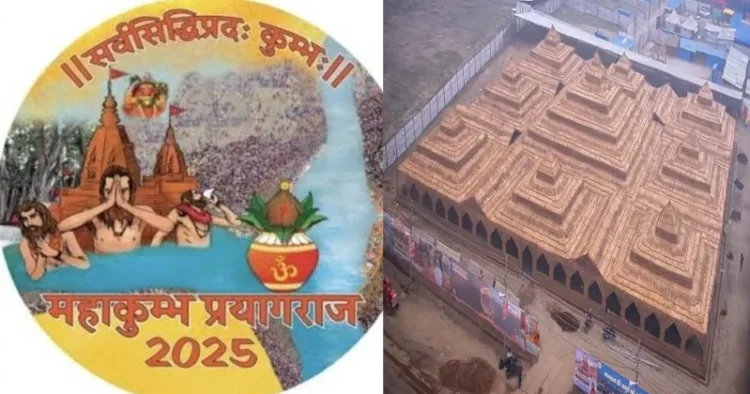Prayagraj is abuzz with anticipation as the 2025 Mahakumbh Mela, one of the world’s largest religious gatherings, prepares to host a spiritual spectacle of unparalleled grandeur. At the heart of this sacred congregation, 1,100 panditwill perform a Maha Yajna over 30 days, demanding the recognition of the cow as Rashtra Mata (National Mother) of India. This ambitious ritual, organised under the auspices of Jyotish Peethadhishwar Jagadguru Shankaracharya Swami Avimukteshwaranand Saraswati, is a clarion call for protecting the sacred Gau Mata and eradicating cow slaughter across the nation.
#WATCH | Mahakumbh 2025 | Prayagraj, UP | The largest 'Yagya Kund' of Maha Kumbh Mela is being prepared where 1100 priests will perform 'Maha Yagya' to demand the status of 'Rashtra Mata' for cow.
Being organized in the camp of Jagadguru Shankaracharya Swami Avimukteshwaranand… pic.twitter.com/8oDUf7iBeV
— ANI (@ANI) January 7, 2025
The Maha Yajna will take place in the largest Yajna camp at the Mahakumbh site, featuring 324 kunds (sacred fire pits) arranged in a symbolic nine-shikhara (nine peaks) formation, representing spiritual unity and elevation. Each kund will be manned by three priests, who will conduct rituals for nine hours daily throughout the month.
#WATCH | Mahakumbh 2025 | Prayagraj, UP | Drone visuals of the largest 'Yagya Kund' of Maha Kumbh Mela where 1100 priests will perform 'Maha Yagya' to demand the status of 'Rashtra Mata' for cow.
Being organized in the camp of Jagadguru Shankaracharya Swami Avimukteshwaranand… pic.twitter.com/foR5Xp24Hr
— ANI (@ANI) January 7, 2025
This spiritual endeavor aims to unite the masses and raise awareness about cow protection while emphasising the cow’s cultural, religious, and ecological significance in Indian tradition. “Bhagwan Shri Ram and Bhagwan Krishna revered Gau Mata deeply. It is high time we, as a nation, honor their legacy and end the cruel practice of cow slaughter,” said Mukundanand Brahmachari, a key organiser of the Yajna.
The Yajna Mandap, where this sacred ritual will unfold, is a testament to meticulous planning and devotion. Over 50 volunteers have worked tirelessly for more than a month to construct the sprawling setup. The construction of the kunds is 75 per cent complete, with additional arrangements being made to house 35 indigenous breeds of cows within the camp.
These cows, brought from different corners of India by dedicated cow protectors, will be sheltered in specially built gaushalas (cow shelters) at the venue. “Our protectors are en route, bringing these revered breeds for the Bhagwan. This isn’t just a religious ritual; it’s a movement to protect and celebrate our cultural heritage,” Brahmachari added.
The Maha Yajna is not merely a religious event; it is a statement of faith, unity, and cultural pride. By demanding Rashtra Mata status for the cow, the pandits and organisers seek to elevate the cow’s status to a symbol of national unity and respect.
This demand is deeply rooted in India’s spiritual ethos. In Hinduism, the cow is seen as a source of nourishment, a symbol of selfless service, and a representation of Mother Earth. The Yajna aims to rekindle these values in the collective consciousness of the nation.
The Mahakumbh Mela 2025, held from January 13 to February 26, is expected to draw over 450 million devotees from across India and the globe. The confluence of the Ganga, Yamuna, and Saraswati rivers at the Sangam will serve as the sacred epicenter of this gathering, where devotees believe a holy dip absolves sins and grants spiritual liberation (moksha).
Amidst this spiritual fervor, the Maha Yajna stands as a beacon of devotion and purpose. The nine-shikhara formation of the Yajna Kund not only signifies the ritual’s spiritual depth but also embodies the unity of millions who come together for a shared cause.
The Mahakumbh is also a stage for extraordinary tales of faith. One such story is that of Naga Sadhu Pramod Giri Maharaj, who begins his day at 4:00 a.m. with a ritualistic bath using 61 pots of cold water, even in freezing temperatures. His resolve to increase the number of pots daily has captivated the devotees and added a mystical allure to the event.
The Maha Yajna has garnered widespread attention, with its organisers emphasising the need for legislative and cultural recognition of the cow’s significance. “This is a message to the world. The cow is not just an animal; it is a symbol of nourishment, sustainability, and spiritual elevation,” said Brahmachari.



















Comments